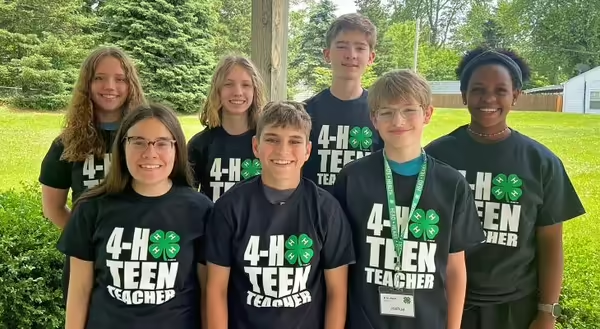
Did you know that 4-H is the largest youth development program in the country?! According to the National 4-H website, “4-H serves youth in rural, urban, and suburban communities in every state across the nation.” However, this impressive organization stemmed from modest beginnings.
In 1902—more than 120 years ago—agricultural youth clubs began popping up in the Midwest. These clubs were a way to give young people hands-on experience tackling challenges in agriculture, and to help youth encourage their families and communities to adopt new practices coming from university research. In 1910, the first H-adorned clover pin was created, and by 1912, the 4-H name was established. These humble beginnings, coupled with the creation of the Cooperative Extension System, slowly transformed 4-H into the educational behemoth it is today.
Here in Fulton, Mason, Peoria, and Tazewell Counties (FMPT Unit), 4-H has maintained the long-standing tradition of youth clubs and continued to tout the importance of agriculture. However, we have also developed new and innovative ways of reaching young people from all backgrounds in myriad subject areas. Throughout the 2021-2022 program year, we touched the lives of over 5,000 young people with the help and dedication of over 650 volunteers.
Our club programs—the flagship of 4-H going back to our earliest roots—regularly gathered 837 young people in 73 clubs. These long-term groups help youth develop life and leadership skills, explore potential careers, and provide service to the community. Sixteen of these clubs are a newer type of the club model called Special Interest (SPIN) clubs, in which the group as a whole focuses on one area of concentration, such as gardening, shooting sports, or dog obedience.
Additional 4-H delivery modes, such as in-school enrichment and camp programs, reached 2,532 young people in the FMPT Unit last year. For instance, the Embryology in the Classroom program allowed 52 groups to learn how to care for and observe the development and hatching of chicken eggs over the course of four weeks. Moreover, the Teen Teacher program provided a handful of teens with the youth development knowledge and leadership skills to then facilitate fun, educational activities for an additional 753 younger participants.
Some of the newest 4-H programming, such as the Connection Corner blog and family activity kits, focused on activities and information provided to the whole family for at-home implementation. This allowed even further reach and the flexibility that today’s families need. These at-home offerings reached 486 youth and an additional 488 adult, and are a great example of how the 4-H program continues to evolve to meet the needs of the community.
MEET THE AUTHOR
Emily Schoenfelder joined the Illinois 4-H team in 2017. Prior to this, she began her work in positive youth development with California 4-H and the YMCA. She specializes in STEM engagement, social-emotional development, and educator professional development.
She received a master of science degree in recreation, park, and tourism administration from Western Illinois University.
When she is not leading a training, writing curriculum, or developing new partnerships, you may find Emily sitting on the floor of her office, building marshmallow catapults out of popsicle sticks or designing mazes for robots for her next STEM program.
ABOUT EXTENSION SNAPSHOTS
Extension Snapshots are monthly impact reports that share the stories of our programs in Fulton, Mason, Peoria, and Tazewell counties. To have them delivered to you directly sign up using our E-blast registration.